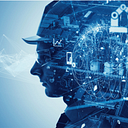The Next Frontier of AI: Large Action Models Poised to Transform Industries
The artificial intelligence landscape is rapidly evolving, with a new breed of models, known as large action models, emerging as a potential game-changer. While large language models (LLMs) like GPT-3 and ChatGPT have captured the public’s imagination with their ability to generate human-like text, large action models are poised to take AI capabilities to new heights by directly controlling complex systems and processes.
What are Large Action Models?
Large action models are a type of AI system designed to take actions in the real world or within simulated environments. Unlike LLMs, which primarily generate text output, large action models are trained to make decisions and execute tasks based on their understanding of the given context and objectives. These models can interact with various interfaces, control robotic systems, or issue commands to software applications, enabling them to directly influence the physical or digital world.
How Large Action Models Differ from Large Language Models
While both large action models and LLMs are built upon deep learning architectures and leverage vast amounts of data for training, their fundamental purposes and capabilities differ significantly. LLMs are primarily focused on natural language processing tasks, such as text generation, summarization, and question answering. In contrast, large action models are designed to learn complex behaviors and develop strategies for achieving specific goals within dynamic environments.
One key distinction is the nature of the training data used. While LLMs are trained on vast corpora of text, large action models are trained on data that captures the relationships between observations, actions, and outcomes. This could include sensor data, control signals, or simulated interactions, enabling the model to learn the consequences of its actions and develop effective strategies.
Advantages and Disadvantages of Large Action Models
Large action models offer several advantages over traditional AI systems and LLMs. They can adapt to complex, real-world scenarios and learn to navigate dynamic environments, enabling applications in fields such as robotics, autonomous systems, and process control. Additionally, by directly influencing the physical or digital world, large action models can potentially unlock new levels of automation and efficiency across various industries.
However, developing and deploying large action models also presents significant challenges. Training these models requires vast amounts of high-quality, domain-specific data, which can be difficult and expensive to obtain. There are also concerns around the safety and reliability of these systems, as unintended or adversarial actions could have severe consequences in critical applications.
Use Cases and Potential Applications
Large action models have a wide range of potential applications across various industries. In manufacturing and logistics, they could optimize production processes, control automated systems, and streamline supply chain operations. In healthcare, large action models could assist in robotic surgery, personalized treatment planning, and drug discovery.
Moreover, large action models could revolutionize fields like autonomous vehicles, smart cities, and environmental monitoring by enabling intelligent decision-making and control in complex, dynamic environments.
Comparing Large Action Models and Large Language Models
While large language models have demonstrated remarkable capabilities in natural language processing tasks, they may fall short in applications that require direct interaction with the physical or digital world. Large action models, with their ability to learn and execute complex behaviors, could be better suited for tasks such as robotic control, process automation, and autonomous system operation.
However, it’s important to note that large action models and LLMs are not mutually exclusive. In many scenarios, these two types of models could be combined, with LLMs providing natural language interfaces and high-level reasoning capabilities, while large action models handle the low-level control and execution tasks.
Future Outlook and Challenges
The development of large action models is still in its early stages, but the potential for transformative applications across industries is immense. As research in this field progresses, we can expect to see more advanced models capable of handling increasingly complex tasks and environments.
However, realizing the full potential of large action models will require overcoming significant challenges. Ensuring the safety, reliability, and ethical behavior of these systems will be of paramount importance, particularly in critical applications where unintended actions could have severe consequences.
Additionally, the development of effective training methodologies, data acquisition techniques, and model architectures tailored for action-based tasks will be crucial areas of focus for researchers and developers in the field.
As the capabilities of large action models continue to evolve, we may witness a paradigm shift in how we approach automation, decision-making, and the integration of intelligent systems into our daily lives. While the journey ahead is filled with challenges, the potential rewards of unlocking the power of large action models make it an exciting frontier in the ever-advancing field of artificial intelligence.
